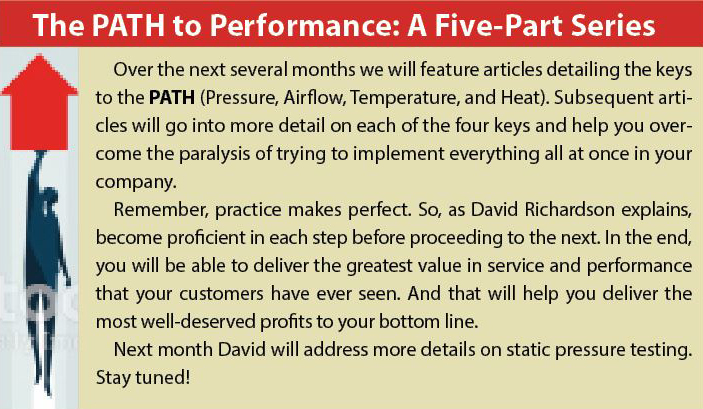Once you have these four readings, use them to calculate duct system temperature losses (ncilink.com/DuctLoss). Such losses provide a lot of insight into why a properly sized system can’t keep up and why oversized equipment appears to work correctly.
Heat
Heat (delivered capacity) is the last step on the airside performance path. It provides proof that your work does what you said it would. As a result, you can show that customers received what they invested in.
Delivered capacity defines real airside system performance.
Btuh (British thermal units per hour) are the measurement for delivered capacity. The number of Btus shows how much heat the HVAC equipment and duct system transfers.
Master airflow and temperature measurements before you move to this last step. Then start by measuring sensible Btus at the equipment. First, plot fan airflow and record it. Next, measure temperature entering and exiting the air-handling equipment. Let the system run for at least 15 minutes and then record your equipment ‘t (temperature difference).
Plug these readings into the sensible heat formula (cfm x ‘t x 1.08) and see how close you are to manufacturer specifications.
If your readings are within ?10% you’re doing great.

Don’t Freeze
Unfortunately, it’s easy to freeze when you stare down the performance PATH. Don’t make the mistake of trying to do everything at once ‘ it results in paralysis. Also, don’t believe the multitasking myth (ncilink.com/MultiTaskMyth). It is proven untrue.
You can achieve airside performance success one step at a time.
First, you need a strong purpose and vision for how you want to use these measurements. Then you have to share that purpose and vision with your team. Otherwise, their importance will quickly fade for the team members in your company.
Look for the remaining articles in this series as I focus on one step of the path at a time. I hope these articles will help you steadily reach your goals. Remember, small consistent steps and habits pave the way to extraordinary HVAC systems.













Recent Comments